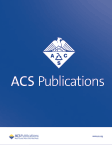摘要 PO3-28-02:乳腺癌幸存者的体像障碍及其对手术后医疗纹身的评价
IF 3.4
Q2 PUBLIC, ENVIRONMENTAL & OCCUPATIONAL HEALTH
引用次数: 0
摘要
文献综述显示,接受过手术的乳腺癌幸存者中,身体形象困扰的发生率很高,这是对其外貌发生重大变化的自然反应。重建手术可利用植入物或皮瓣来恢复乳房的大小和形状。医疗纹身可以重塑乳头-乳晕复合体,装饰性贴花可以掩盖疤痕和肤色差异。整形手术和医学纹身都与患者报告的满意度有关,但要了解它们对身体形象困扰的综合影响,还需要进一步的研究。为了研究这个问题,我们在全国性的乳腺癌支持团体和宣传机构中发放了一份调查问卷,共收到 207 份符合研究标准的个人回复。参与者被分为两组:接受手术后医疗纹身者(n = 61)和未接受手术后医疗纹身者(n = 146)。该研究还考察了参与者如何评价做出各种手术和美容干预选择的患者的美容满意度和决策满意度。为此,研究人员让参与者对接受了三种干预的患者的图像进行评分:仅乳房切除和重建、仅乳房切除和医疗纹身,以及乳房切除、重建和医疗纹身。通过线性回归和多层次建模(控制了与身体形象困扰相关的人口统计学和临床因素),研究结果表明,与没有医疗纹身的人相比,有医疗纹身的参与者报告的身体形象困扰、抑郁症状和感知压力水平明显较低。此外,参加者对乳房切除术后同时接受重建和医疗纹身的患者的图像进行的美容和决策满意度评分明显高于只接受重建或医疗纹身的患者的图像。这项研究拓展了我们对幸存者身体形象困扰的理解,将其视为一种多维结构,并可能有助于指出潜在的干预手段。加强我们对乳腺癌治疗和手术如何影响幸存者身体形象困扰的理解,可以帮助医护人员提供更多的心理教育和建议。此外,在治疗过程的早期,将医疗纹身作为一种补充性美容方案介绍给患者,可以让患者有机会在其整体治疗计划的背景下考虑医疗纹身。表.以 BIBCQ 为结果变量,医疗纹身组别为预测变量(包含协变量)的线性回归结果。注。PHQ9 = 患者健康问卷-9。PSS = 感知压力量表。引用格式:米兰达-普罗克特、杰弗里-卡西西。乳腺癌幸存者的身体形象困扰及其对手术后医疗纹身的评价[摘要]。In:2023 年圣安东尼奥乳腺癌研讨会论文集;2023 年 12 月 5-9 日;德克萨斯州圣安东尼奥。费城(宾夕法尼亚州):AACR; Cancer Res 2024;84(9 Suppl):Abstract nr PO3-28-02.本文章由计算机程序翻译,如有差异,请以英文原文为准。
Abstract PO3-28-02: BODY-IMAGE DISTRESS IN BREAST CANCER SURVIVORS AND THEIR EVALUATION OF MEDICAL TATTOOING FOLLOWING SURGERY
A review of the literature reveals a high incidence of body-image distress among breast cancer survivors who have undergone surgery, which is a natural response to the significant changes in their appearance. Reconstructive surgery, utilizing implants or flaps, may be employed to restore breast size and shape. Medical tattooing can recreate the nipple-areola complex and decorative appliques can conceal scars and skin color variations. Both reconstructive surgery and medical tattoos are associated with patient-reported satisfaction, yet further research is necessary to understand their combined impact on body-image distress. To investigate this, a survey was distributed among national breast cancer support groups and advocacy organizations, yielding 207 responses from individuals meeting the study's criteria. The participants were categorized into two groups: those who received post-surgical medical tattoos (n = 61) and those who did not (n = 146). The study also examined how participants evaluated the cosmetic and decision satisfaction of patients who made various surgical and cosmetic intervention choices. This was accomplished by having participants rate images of patients who had received three types of intervention: mastectomy and reconstruction only, mastectomy and medical tattooing only, and mastectomy, reconstruction, and medical tattooing. Using linear regression and multilevel modeling that controlled for demographic and clinical factors associated with body-image distress, the findings demonstrated that participants with medical tattoos reported significantly lower levels of body-image distress, depressive symptoms, and perceived stress compared to those without medical tattoos. Furthermore, participants rated images of patients who underwent both reconstruction and medical tattooing post-mastectomy as having significantly higher cosmetic and decision satisfaction ratings than images of patients who received reconstruction or medical tattooing alone. This research expands on our understanding of body-image distress in survivors as a multidimensional construct and may serve to indicate potential means for intervention. Enhancing our understanding of how breast cancer treatment and surgery affects survivors' body-image distress may aid healthcare professionals in offering additional psychoeducation and recommendations. Furthermore, presenting information about medical tattooing as a complementary cosmetic option early in the treatment process allows patients the opportunity to consider it within the context of their overall treatment plan.
Table. Linear regression results using BIBCQ as the outcome variable and medical tattoo group as the predictor variable with covariates included. Note. PHQ9 = Patient Health Questionnaire-9. PSS = Perceived Stress Scale.
Citation Format: Miranda Proctor, Jeffrey Cassisi. BODY-IMAGE DISTRESS IN BREAST CANCER SURVIVORS AND THEIR EVALUATION OF MEDICAL TATTOOING FOLLOWING SURGERY [abstract]. In: Proceedings of the 2023 San Antonio Breast Cancer Symposium; 2023 Dec 5-9; San Antonio, TX. Philadelphia (PA): AACR; Cancer Res 2024;84(9 Suppl):Abstract nr PO3-28-02.
求助全文
通过发布文献求助,成功后即可免费获取论文全文。
去求助
来源期刊

ACS Chemical Health & Safety
PUBLIC, ENVIRONMENTAL & OCCUPATIONAL HEALTH-
CiteScore
3.10
自引率
20.00%
发文量
63
期刊介绍:
The Journal of Chemical Health and Safety focuses on news, information, and ideas relating to issues and advances in chemical health and safety. The Journal of Chemical Health and Safety covers up-to-the minute, in-depth views of safety issues ranging from OSHA and EPA regulations to the safe handling of hazardous waste, from the latest innovations in effective chemical hygiene practices to the courts'' most recent rulings on safety-related lawsuits. The Journal of Chemical Health and Safety presents real-world information that health, safety and environmental professionals and others responsible for the safety of their workplaces can put to use right away, identifying potential and developing safety concerns before they do real harm.
 求助内容:
求助内容: 应助结果提醒方式:
应助结果提醒方式:


